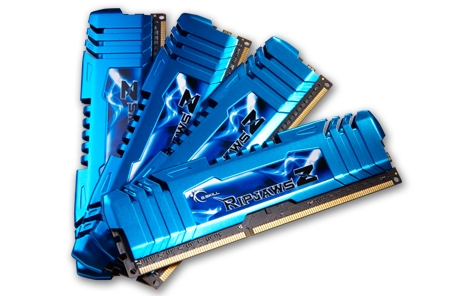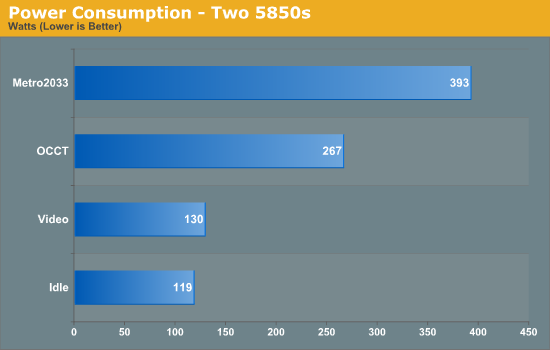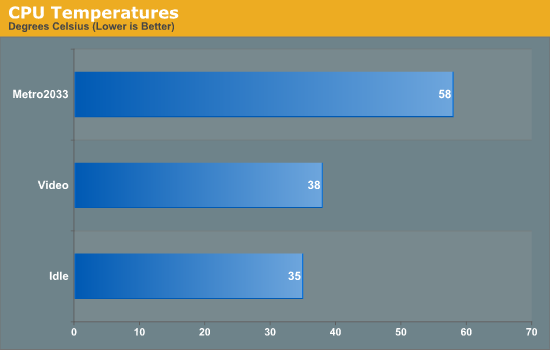Gigabyte GA-X79-UD3 Review
by Ian Cutress on December 26, 2011 4:37 PM EST- Posted in
- Motherboards
- Gigabyte
- X79
- Sandy Bridge E
Many thanks to...
Many thanks go to G.Skill once again, for providing us with their latest RipjawsZ kit, after an accident caused one of my previous review memory kit DIMMs to no longer work. The kit G.Skill sent us is their F3-19200CL9Q-16GBZMD, a 4x4 GB kit for X79, rated at DDR3-2400 CL9 11-11-31 at 1.65V. This makes it a very fast kit on the market, which is represented in its large price tag.

Test Setup
| Processor |
Intel Sandy Bridge-E i7-3960X 6 Cores, 12 Threads, 3.3 GHz (3.9 GHz Turbo) |
| Motherboards | Gigabyte GA-X79-UD3 |
| Cooling | Intel All-In-One Liquid Cooler, made by Asetek |
| Power Supply | Silverstone 1000W 80 PLUS Silver |
| Memory | G.Skill RipjawsZ DDR3-2400 CL9 11-11-31 4x4 GB Kit 1.65V |
| Memory Settings | XMP |
| Video Cards |
XFX HD 5850 1GB ECS GTX 580 1536MB |
| Video Drivers |
Catalyst 11.8 NVIDIA Drivers 285.62 |
| Hard Drive | Micron RealSSD C300 256GB |
| Optical Drive | LG GH22NS50 |
| Case | Open Test Bed - CoolerMaster Lab V1.0 |
| Operating System | Windows 7 64-bit |
| SATA Testing | Micron RealSSD C300 256GB |
| USB 2/3 Testing | Patriot 64GB SuperSonic USB 3.0 |
Power Consumption
Power consumption was tested on the system as a whole with a wall meter connected to the power supply, while in a dual GPU configuration. This method allows us to compare the power management of the UEFI and the board to supply components with power under load, and includes typical PSU losses due to efficiency. These are the real world values that consumers may expect from a typical system (minus the monitor) using this motherboard.

CPU Temperatures
With most users’ running boards on purely default BIOS settings, we are running at default settings for the CPU temperature tests. This is, in our outward view, an indication of how well (or how adventurous) the vendor has their BIOS configured on automatic settings. With a certain number of vendors not making CPU voltage, turbo voltage or LLC options configurable to the end user, which would directly affect power consumption and CPU temperatures at various usage levels, we find the test appropriate for the majority of cases. This does conflict somewhat with some vendors' methodology of providing a list of 'suggested' settings for reviewers to use. But unless those settings being implemented automatically for the end user, all these settings do for us it attempt to skew the results, and thus provide an unbalanced 'out of the box' result list to the readers who will rely on those default settings to make a judgment. CPU Temperatures are not really indicative of quality or performance, even though one would postulate that worse parts may produce higher temperatures. However, if a manufacturer uses more conductive material in the power plane, this reduces resistance and increases the voltage at the CPU, causing a higher temperature but potentially better stability.











39 Comments
View All Comments
MadMan007 - Monday, December 26, 2011 - link
There are other ways to implement fan control than PWM though, namely voltage control which works with any fan even 2-pin ones with no RPM sensor plus all the 3-pin aftermarket fans. Even if all it did was allow for altrered voltage, or simple software with manual profiles (ie: 'quiet' at a certain voltage' and 'high performance' at another voltage) it would be a big step up from no fan control. Of course that probably costs about $1 in additional parts so god forbid many motherboards have that.In the end it just means having to stick with a real manual fan control but it would be nice to see on motherboards.
gevorg - Wednesday, December 28, 2011 - link
True but not all mobo manufacturers are as cheap as Gigabyte in this regard. Basic P67/Z68 mobos from Intel and Asus/ASRock have case fan controls and some even by PWM.Andrea deluxe - Tuesday, December 27, 2011 - link
http://www.techpowerup.com/157543/Gigabyte-Recalli...Andrea deluxe - Tuesday, December 27, 2011 - link
http://www.youtube.com/watch?v=J_Wk4QWHjpcBrandenburgh Man - Tuesday, December 27, 2011 - link
It's silly to criticize Gigabyte's Multi-Threaded 3D Particle Movement score when the difference between Gigabyte's score of 898.96 and the highest score of 914.36 is less than 2 percent. In the real world, anything less than a 10 percent performance difference is unnoticeable by the user. Typically you have to get 20 to 25 percent better performance before it becomes meaningful to you, and 33 percent or better before you start getting excited about it.wifiwolf - Tuesday, December 27, 2011 - link
If you mean motherboard performance benchmarks are by far less meaningful i agree.That's because this is the less significant part in your system performance-wise, which means 2% difference overall is enough to say it's too much for an high-end.
cactusdog - Tuesday, December 27, 2011 - link
Gigabyte has recalled this board because of a too weak VRM that alows mosfets to explode when overclocking,UD3/ UD5, A1 Assassin all RECALLED by Gigabyte
rumblpak - Tuesday, December 27, 2011 - link
Shouldn't you note that they've all been recalled? Gigabyte announced a worldwide recall of all of their X79 boards.surt - Tuesday, December 27, 2011 - link
Who is buying an x79 and only getting 4 memory slots anyway? That's just crazy. If you want this platform at all, you surely want the large amount of memory it can support. If for nothing else, you can run a nice ramdisk and get things running 10x faster than the best SSD you can buy.Brandenburgh Man - Tuesday, December 27, 2011 - link
I thoroughly agree. SSDs are great for fast boot times and fast program loads, but when you really need *superfast* access to data, nothing beats a RAM drive.Although 4GB DDR3 sticks are dirt cheap right now, four memory slots only comes to 16GB. A six-core hyper-threaded Sandy Bridge E chip would quickly exhaust that if you're a power user who does a lot of video editing or transcoding while simultaneously running other programs. Even if you can afford the currently very expensive 8GB DDR3 sticks, 32GB isn't anything to brag about for a workstation class computer. Better to get a mobo with 8 slots and populate it with 32GB now, then upgrade to 64GB a year or so later when 8GB sticks becine more affordable. Then you'd have the best of both worlds, a huge RAM-disk for incredibly fast I/O, with enough system RAM left over to keep the CPU from being starved.
A few years ago Jerry Pournelle said we were entering the age of computational plenty. I like to say we're entering the age of desktop supercomputing. The future looks very bright indeed.